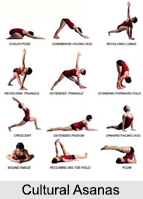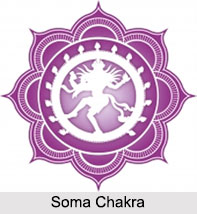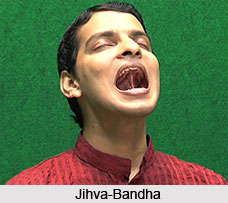 The sthira sukham asanam sutra speaks about the immense betterment effects when one performs asanas. They must be done in their perfect sense and posture, never disregsrding or neglecting them. One must follow a set of norms while performing asanas, otherwise they tend to harm people. While meditating, one must bring about a unity of mind and body muscles, never just taking it for pleasure. If performed with the accurate posture, they ensue a sound mind and body. Asanas have a five-fold function to perform that ensures a free flow of energy throughout the body.
The sthira sukham asanam sutra speaks about the immense betterment effects when one performs asanas. They must be done in their perfect sense and posture, never disregsrding or neglecting them. One must follow a set of norms while performing asanas, otherwise they tend to harm people. While meditating, one must bring about a unity of mind and body muscles, never just taking it for pleasure. If performed with the accurate posture, they ensue a sound mind and body. Asanas have a five-fold function to perform that ensures a free flow of energy throughout the body.
sthira firm, fixed, steady, steadfast, lasting
sukham happiness, delight
asanam postures, poses
Asana is perfect firmness of body, steadiness of intelligence and benevolence of spirit.
The definition of asana is stated as follows - whatever asana is performed, it should be done with a feeling of firmness, steadiness and endurance in the body; goodwill in the intelligence of the head, and awareness and delight in the intelligence of the heart. This is how each asana should be understood, practised and experienced. Performance of the asana should be nutrifying and illuminative.
Some have taken this sutra to understand that any comfortable posture is suitable. If that were so, these would be asanas of pleasure (bhogasanas) not yogasanas. This sutra defines the perfected asana. From the very first sutra Patanjali calls for the highest quality of attention to perfection. This discipline and attention must be applied for the practice of every asana, to permeate to its very depths in the remotest parts of the body. Even the meditational asana has to be cultivated by the fibres, cells, joints and muscles in cooperation with the mind. If asanas are not performed in this way, they become out of date and the performer becomes diseased (a rogi) instead of a yogi.
Nor does asana refer exclusively to the sitting postures used for meditation. Some divide asanas into those, which cultivate the body and those, which are used in meditation. But in any asana the body has to be toned and the mind tuned so that one can stay longer with a firm body and a serene mind. Asanas should be performed without creating antagonism in the muscle spindles or the skin cells. Space must be created between muscle and skin so that the skin receives the actions of the muscles, joints and ligaments. The skin then sends messages to the brain, mind and intelligence, which judge the appropriateness of those actions. In this way, the principles of yama and niyama are involved and action and reflection harmonise. In addition the practice of a variety of asanas clear the nervous system, causes the energy to flow in the system without impediment and guarantees an even distribution of that energy during pranayama.
Usually the mind is closer to the body and to the organs of action and perception compared to the soul. As asanas are refined, they automatically become meditative as the intelligence is made to interpenetrate towards the core of being.
Each asana has five functions to perform. These include - conative, cognitive, mental, intellectual and spiritual. Conative action is the exertion of the organs of action. Cognitive action is the perception of the results of that action. When the two are melded together, the discriminative faculty of the mind acts to guide the organs of action and perception to perform the asanas more perfectly; the rhythmic flow of energy and awareness is experienced evenly and without interruption, both centripetally and centrifugally throughout the channels of the body. A pure state of joy is experienced in the cells and the mind. The body, mind and soul are one. This is the manifestation of dharana and dhyana in the practice of an asana.
Patanjali`s explanation of dharana and dhyana in sutras in 1-2 brilliantly describes the exact performance of an asana. He says, `the focusing of attention on a chosen point or area within the body as well as outside is concentration {dharana). Maintaining this intensity of awareness leads from one-pointed attention to non-specific attentiveness`. When the attentive awareness between the consciousness of the practician and his practice is unbroken, it becomes dhyana. In 11.48, when Patanjali says that the pairs of opposites do not exist in the correct performance of an asana, he clearly implies the involvement of dharana and dhyana.



